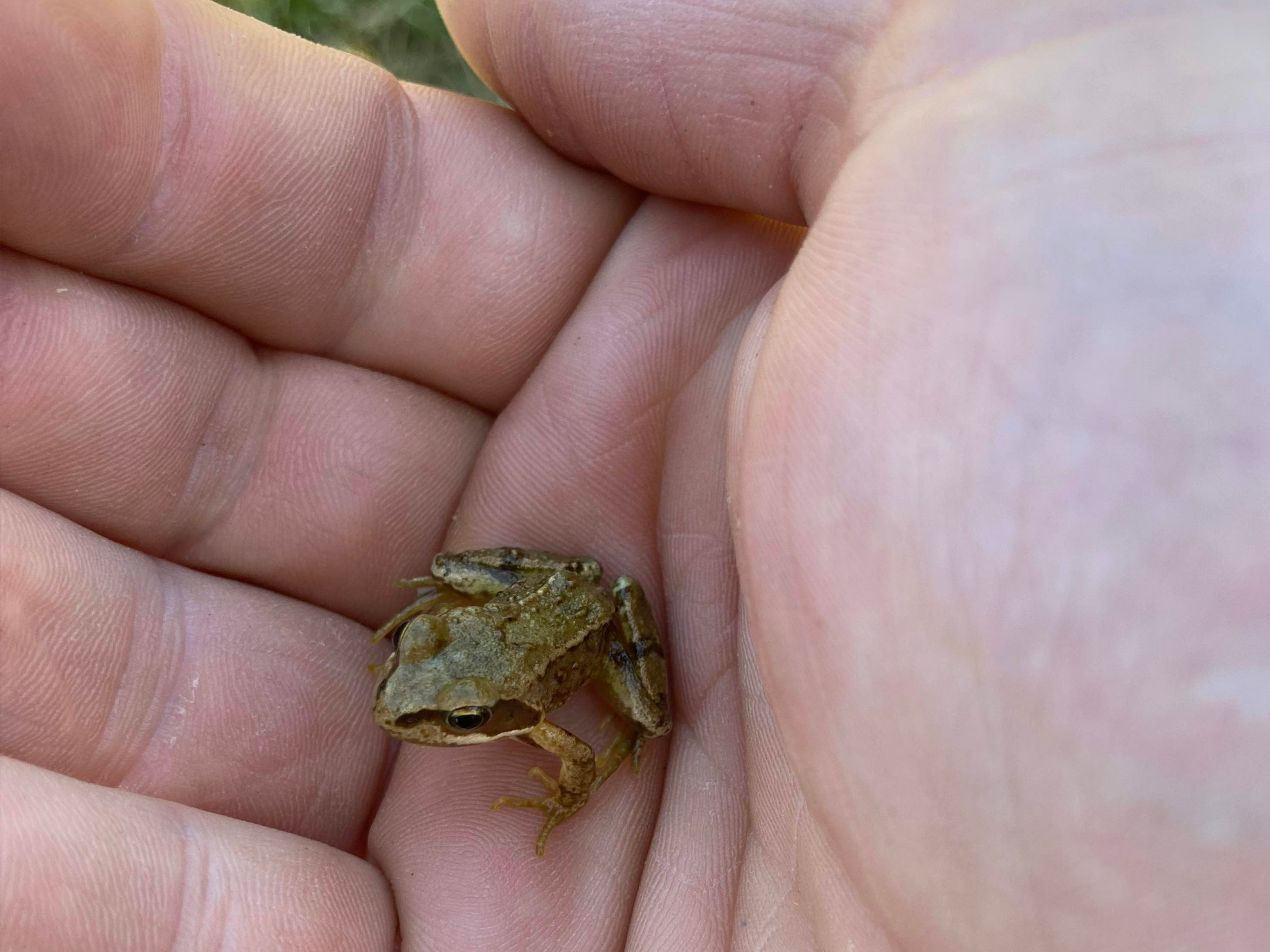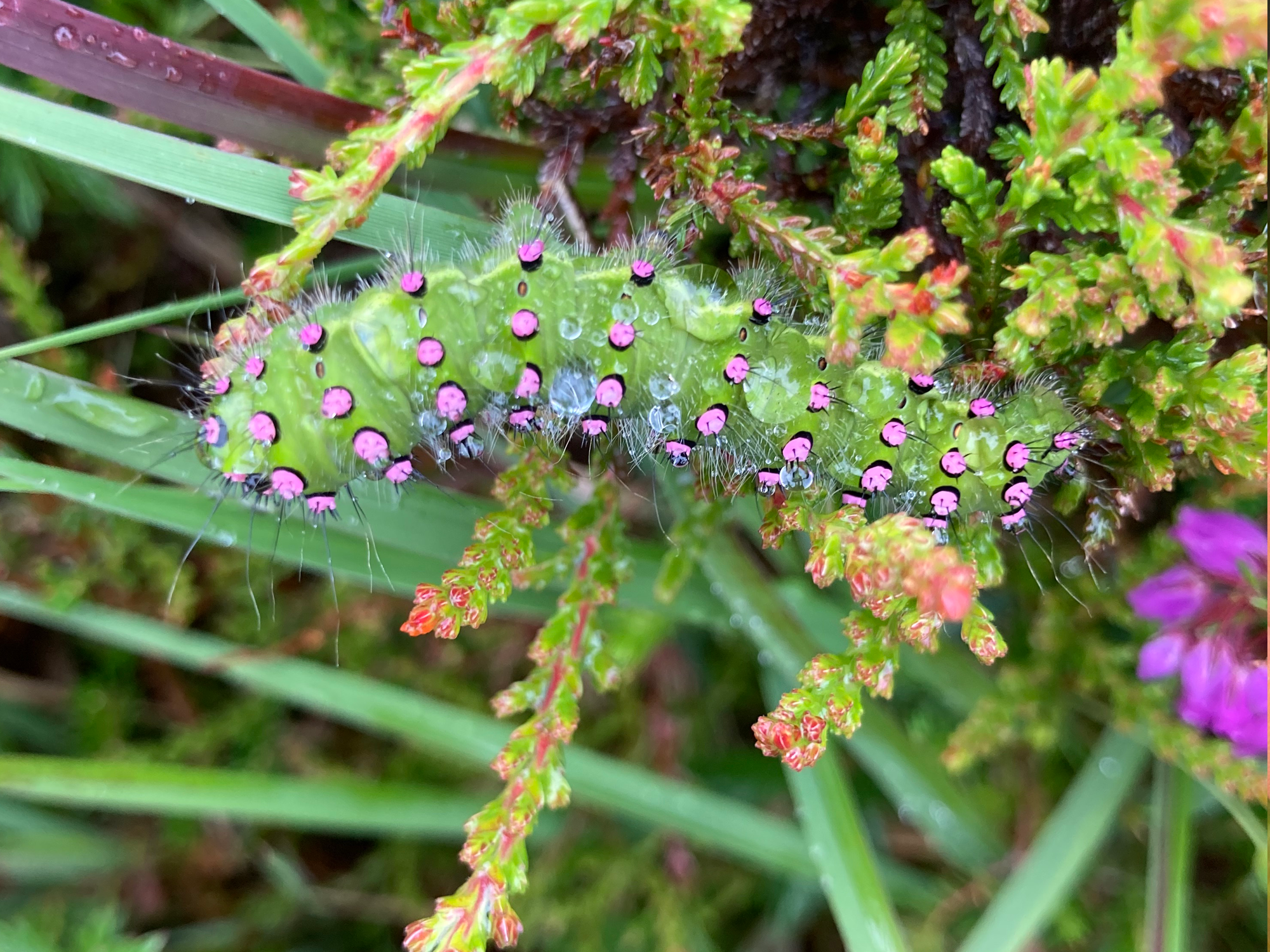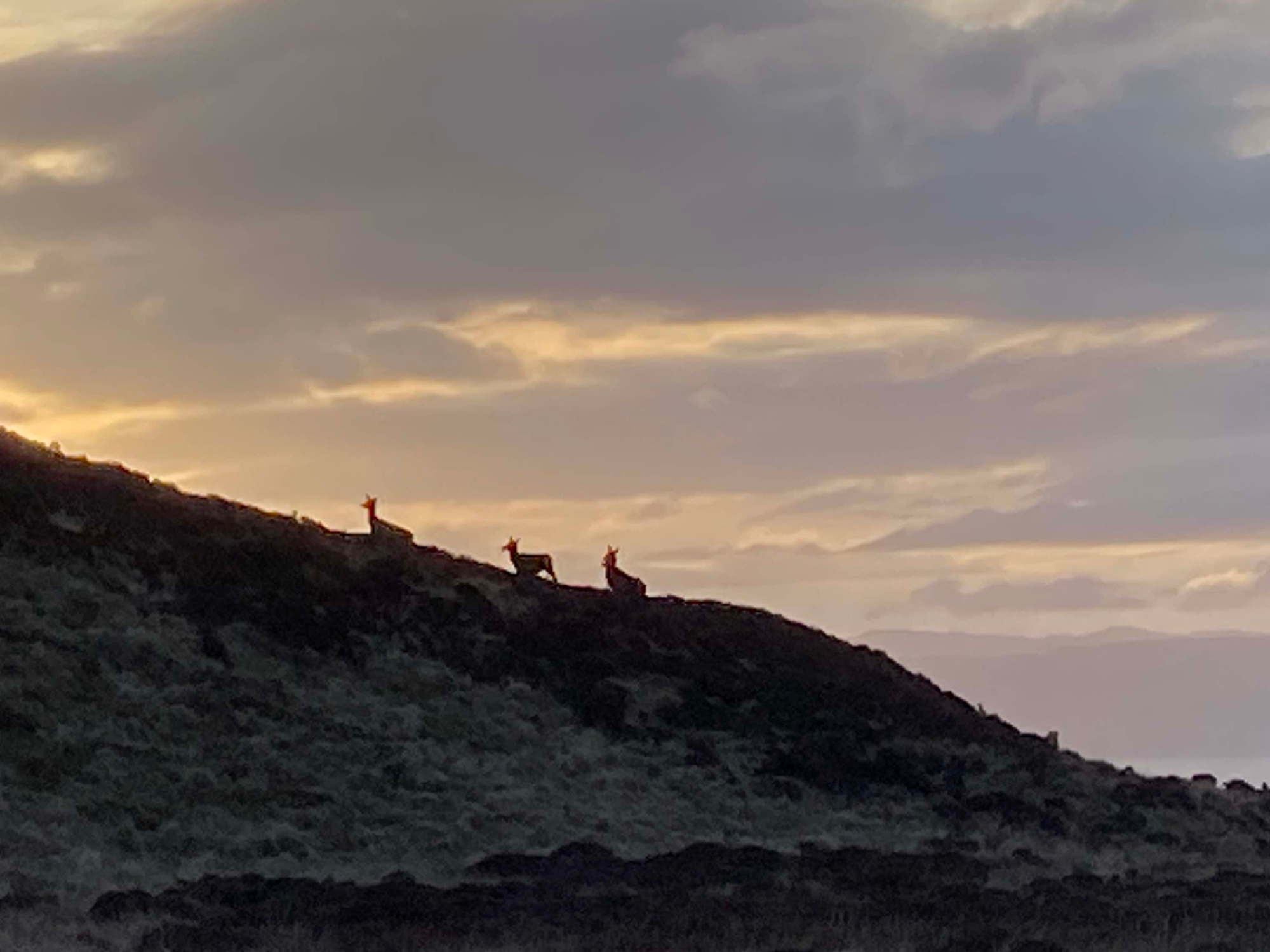
Master of Deer
I first came to Kilchoan in June 2022. At the time, it was to examine the site for a masters project. Even during that brief visit, I could see how wonderful Kilchoan was; in 2023, after five weeks of fieldwork, I can confirm it is much more.
The masters project which came to fruition was to explore different methods for monitoring the estate’s deer populations. Luke and Marnik posed the idea as part of a greater rewilding goal. For ecological restoration to be successful, it is important to control herbivore numbers, but sustainable control requires monitoring. So, a project was designed which compared feasible deer monitoring methods and to provide baseline data on the deer populations present.
The view from the top, across the estate towards the north west.
The variety of methods allowed me to explore nearly every corner of the estate. I have crossed all the estate’s peatlands and woodlands multiple times. Starting at the end of March, I have visited the estate on five occasions for week-long stays, observing the estate leave winter and blossom into summer.
For an aspiring ecologist and lover of nature, being on the estate was a wonderful privilege. It allowed me to observe so much in such a short period of time.

SMALL COMMON FROG
In the peatlands and hills, meadow pippets, wheatears, sandpipers and cuckoos added colourful sound to the rolling hills, flat marshes, and buffeting winds. Eagles and buzzards add to the magnificence of the landscape. The scurrying of common lizards and sudden kicks of frogs, as well as the ambling of the odd toad, brings the ground beneath your feet to life. On the sunny days, the moss and heather appear to move with hundreds of spiders migrating from your path. Large drinker moth, small emperor moth, and even marsh fritillary butterfly caterpillars also spot the landscape – but these require a much keener eye.

Common lizard
The woodlands contain their own wonders. Thrushes, tree creepers, woodpeckers, and more bring already vibrant semi-natural woodland into its own. Withstanding the onslaught of midges, the spectacle of which is equally impressive, is worth it for seeing and hearing the woods. The trunks and branches of ash, beech, hazel, and oak are also harbingers of life, with large colonies of tree lungwort throughout the woods. As the summer moves in, speckled wood butterflies come out, while the roads come to life with dor beetles shunting across them.

It would be remiss not to mention the deer – which brought about my presence on the estate after all.
The signs of deer are incredibly clear throughout the woodlands and hills. Large trackways can be seen either side of the road and across the hills and peatlands. It is possible to tell these apart from the sheep tracks from the hoof marks shapes. The bark from trees is clearly stripped away in places, with a few unfortunate trees in the estate’s gardens being victim to roe’s rubbing their antlers against them. The signs of deer are just the start.

A junction in a deer highway.
On the estate, there are two confirmed species of deer: red and roe. The smaller roe is typically present in the woodlands, along the shore of Loch Melfort and up at Magazine Woods, and within the grounds of the estate. They are easily seen from the roads during the day, with a lot of activity around the interpretation hub. On many occasions, instead of seeing them I have been frustrated by their crashing through the undergrowth followed by annoyed barking – such is the search roe.
A young roe buck in the estate’s gardens.
Finding reds requires a trip up the hills. Slogging it up the hills, around dusk, where once were no deer, can now be multiple groups, spread out over the peatlands. They are incredible, particularly as they come into their summer red coat. There are days where they do not mind much; however, once they realise you’re present, they scarper. They move gracefully across the bogs as if walking on air – it makes a mockery of human efforts as we stumble ungainly across the heather, slipping and sliding about.
Red deer escaping over the hills.
Having been on and off the estate for nearly 4 months, it has been a pleasure to be allowed access to this wonderful area. It offers a place where nature is thriving and where the ethos is committed to restoring ecological processes. I will miss being up on the estate and walking across its land to explore; but I can’t wait to see how it changes in the years to come.
My thanks to Luke and Marnik for facilitating the project and everyone on site for making my stays at the estate so enjoyable!
